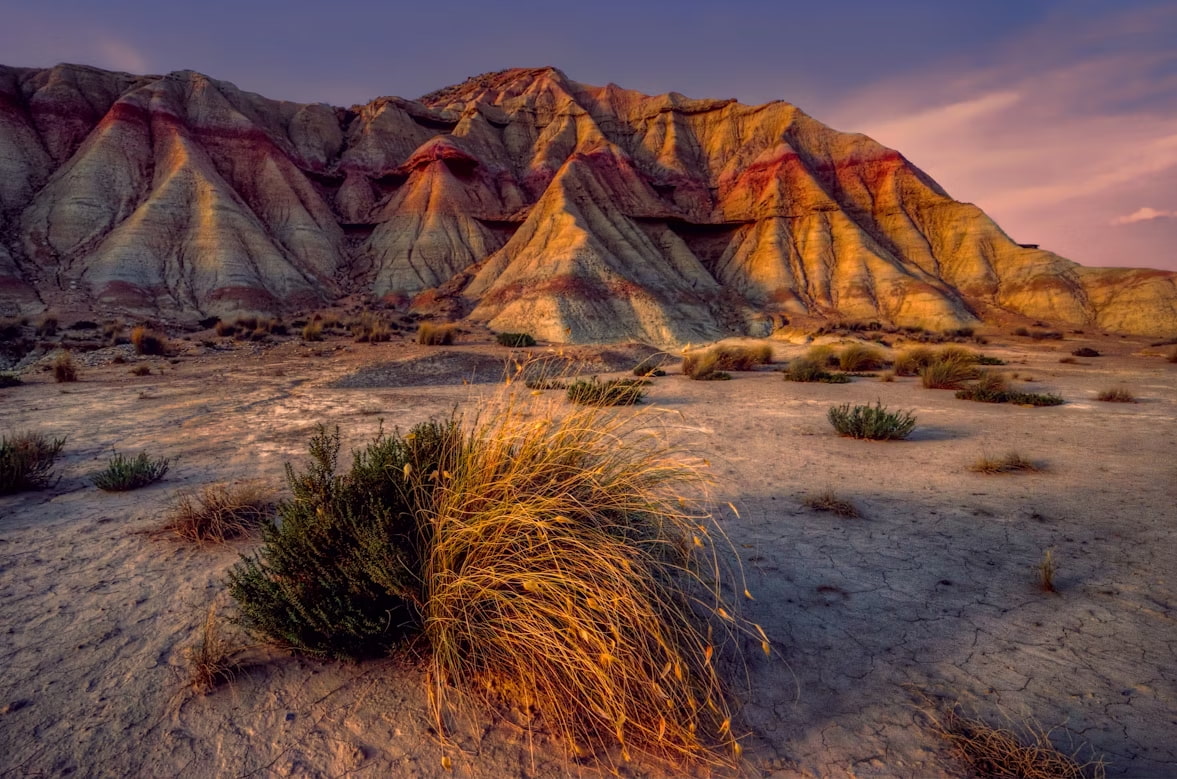Visit the secret Spanish islands: discover hidden gems beyond the tourist hotspots

Summary
- 1. The Canary Islands: Volcanic landscapes and untouched nature
- 2. The Balearic Islands: Beyond Ibiza and Mallorca
- 3. Spain’s lesser-known coastal islands
- 4. Isla del Fraile: A mysterious island in Murcia
- 5. Isla de Lobos: A volcanic island near Fuerteventura
- 6. The rich gastronomy of Spain’s secret islands
- 7. More adventures await: Unique experiences on the Spanish islands
- 8. When to go to Spanish islands: The best periods
- 9. Discover Spain’s intriguing islands at your own pace
Spain has islands which are not commonly known apart from the Balearics and the Canaries. These islands have untouched beaches and a rich heritage. These lesser-known islands have everything, including volcanic mountains. Whether someone is seeking adventure or chilling spots, these islands will not disappoint the traveler.
The Canary Islands: Volcanic landscapes and untouched nature
For whom? For those looking for calm exploration, for couples on a romantic getaway, for undisturbed nature lovers.
Spain’s latest officially documented island, La Graciosa, is a perfect escape from crowded tourist locations. It is located just off Lanzarote’s coast and has its own pristine beaches and turquoise waters. Most importantly, it’s a car free zone! As no roads are paved on the island, visitors can alternatively access them by bike or ride in 4×4 taxis.
Another must-visit location is Playa de las Conchas where visitors can bask in the view of the golden sand, and breathtaking views of surrounding isles. La Graciosa is unparalleled in its stunning natural beauty, and for anyone looking to unwind, it is a perfect destination. And the best part? It’s only a short ferry ride away from Lanzarote!
El Hierro: The sustainable island of the Canaries
For who? Perfect for travelers concerned about the environment, advanced travelers looking for thrilling experiences, and those passionate about diving and underwater exploration.
One of the Canary Islands, El Hierro, is currently the least populated and is a UNESCO Biosphere Reserve, being the first to adopt renewable energy. It is home to stunning cliffs, forests, and clear water which makes it ideal for nature lovers. Scuba divers appreciate La Restinga as one of the best places in the world to explore. With its impeccable sceneries, rich wildlife, and focused approach towards sustainability, El Hierro is surely an island that stands out among the rest.
La Gomera: A hiker’s paradise
Target group: La Gomera has an unusual combination of exploration and culture for hikers, nature lovers, and offseason travelers.
Garajonay National Park, a UNESCO World Heritage Site, is famous for its ancient laurel forests which are intertwined with valleys and deep ravines. In addition to breathtaking scenery, the island also preserves one-of-a-kind whistled language, Silbo Gomero, a muse still vying for attention in the classroom. Nature and heritage coexisting in one place makes this the perfect destination.
La Palma: The green island of the Canaries
For whom? For those who are passionate stargazers, photographers, hikers, and anyone interested in venturing into volcanic landscapes.
La Gomera presents whale watching opportunities combined with watching nature since Garajonay National Park, which is a UNESCO World Heritage Site, is home to the ancient laurel forests. The island is famed for its well marked Hiking Trails through the deep ravines, breathtaking viewpoints and verdant surroundings. The island also celebrates Silbo Gomero, a unique whistled language taught in schools. This is the best combination of activities and relaxation.
The Balearic Islands: Beyond Ibiza and Mallorca
Formentera: A tranquil Mediterranean escape
For whom? For couples, individual tourists, and those fond of the beach seeking a tranquil getaway.
While Ibiza grabs the limelight, Formentera fascinates with its pale sand and turquoise waters. Es Pujols and Playa de Ses Illetes boast some of the most beautiful coastlines in the Mediterranean. The island is slow-paced and is best appreciated on foot or bicycle. Relish the local seafood, explore picturesque lighthouses, and relax in the pristine nature.
Cabrera: The untouched national park
For who? For lovers of nature like birdwatchers and snorkelers in search of unspoiled splendor.
It is an underwater reservation. Cabrera is an island located at the south of Mallorca in Spain. It forms part of the Archipelago of Cabrera National Park. It has amazing beaches with water of transparent blue color and an abundance of animal life. It offers great sites for snorkelling as well as hiking. Blue Grotto is the Zen Paragon of every hiker’s dream due to its breathtaking colors that sunlight reflects in the water.
Menorca: The Balearic island of tranquility
Food lovers and history fans will particularly appreciate the mix of relaxation and adventure Menorca offers families.
Menorca is the tranquil Balearic Island; it has UNESCO Biosphere Reserve status. Like its more lively counterparts, Menorca has preserved its beaches, hidden coves, and rolling countryside. These coves and beaches as well as kayaking, hiking, and horseback riding make for great outdoor activities. Menorca has much to offer, like Ciutadella where menorca’s rich history is visible through the narrow streets and Gothic architecture.
Spain’s lesser-known coastal islands
Isla de Ons: Galicia Is best-kept secret
Who? For hikers, seafood enthusiasts and for those searching for a true escape in Galicia.
Ons Island features rugged shorelines, hidden beaches, and a charming fishing village, which is part of Galicia’s National Park . Breathtaking trails pass through steep cliffs with sweeping views of the ocean. Of course, trying the island’s specialty, Pulpo a la Gallega, tender octopus served the traditional way, is a must.
Tabarca: The smallest inhabited island in Spain
For enthusiasts of history, lovers of snorkelling, and seeking true tastes – Tabarca does not discriminate.
Tabarca is but a stone’s throw away from Alicante which makes it easy to travel to. This place used to be a safe haven for pirates but now serves as a marine reserve. There are numerous features to admire which include the historic town of Tabarca, rich waters to snorkel in, and upscale restaurants serving fresh fish such as Caldero, rice and fish muscle.
Isla del Fraile: A mysterious island in Murcia
Who? Adventurers, history enthusiasts, and kayak enthusiasts looking for an alternative holiday experience.
Isla del Fraile, situated off the Murcia coast at Águilas, retains Roman-era archaeological remains. With its transparent waters, underwater caverns, and varied sea life, it’s a perfect place for diving and kayaking. Unpopulated but full of history and natural wonder, it’s a place that makes an indelible mark.
Isla de Lobos: A volcanic island near Fuerteventura
For whom? For hikers, snorkelers, and nature lovers seeking a secluded retreat.
Isla de Lobos, situated between Fuerteventura and Lanzarote, is a nature reserve under protection with stunning volcanic scenery and abundant wildlife. Restricted visitor access helps it remain wonderfully unspoiled. A short boat trip from Corralejo, it makes an ideal day-trip destination, whether for leisurely walks, snorkeling in clear turquoise water, or simply relaxing on a deserted beach.
Good to know
Some islands, like La Graciosa, are not car-friendly, so best discovered on foot or by bike. Others, like El Hierro and La Palma, have lovely roads perfect for a drive. Islands are often connected by ferry, and it is wise to book in advance. To get close to the action, hiring a boat provides access to secluded beaches and coves. Weather varies, volcanic islands are breezy, the Balearics are warm and the Mediterranean.
The rich gastronomy of Spain’s secret islands
Every one of Spain’s islands has its own gastronomic identity created by its past and environment. Fresh fish and seafood, island specialties like papas arrugadas, and wrinkled potatoes with a multicolored mojo sauce are found in the Canary Islands. El Hierro’s quesadilla herreña, a cheese pastry with a sweet taste, and La Palma’s bienmesabe, an almond sweet, are two of the area’s rich tastes. In the Balearics, Menorca is renowned for Mahón cheese, its strong, creamy taste, and caldereta de langosta, rich lobster stew. Formentera makes flaó and cheesecake flavored with mint, and Cabrera offers newly caught fish from its crystal waters.
Beyond the Mediterranean, Galicia’s Isla de Ons is a seafood heaven, celebrated for pulpo a la gallega (Galician-style octopus) and empanadas de mariscos (seafood pies). Off the Alicante coast, Tabarca’s specialty, caldero, is fish and rice cooked in saffron, honoring the island’s seafaring heritage. From hearty stews to delicate pastries, each island carries its flavor to share, so every meal is a journey.
More adventures await: Unique experiences on the Spanish islands
Apart from the magnificent views from the Spanish islands, there’s something new for tourists during every visit. Having a vehicle at one’s disposal allows one greater flexibility in taking trips assuring complete comfort throughout travel. Europcar Spain offers the opportunity of discovering new locations.
- Dolphin and Whale Watching: These islands are some of the premier places for observing these marine animals. Tourists on the islands will have the opportunity to view pilot whales and bottlenose dolphins, orcas among other sea animals.
- Cave Exploration Activities: The islands disclose beautiful landscape settings for their caves. Verdes is a lava tunnel in Lanzarote which has been shaped due to volcanic eruptions and offers an amazing trip through its underground caves. Mallorca’s Drach Caves, which host the world’s largest underground sea, also offers beautiful tourist attractions.
- Kitesurfing and windsurfing: With smaller coastline features Fuerteventura and Tarifa are some of the best places for these sports. There is great wind for anyone that desires to take part in these activities fueling any skill level.
- Birdwatching: The flowers and fauna valued the most by scientists stands out creating a wondrous setting for bird observers. These two parks are considered to be number one for this purpose.
- Wine Tasting and Vineyard Tours: Lanzarote’s volcanic soil provides its wines with a distinguishing feature, particularly the Malvasia Volcánica. The wineries in Mallorca and Menorca are equally remarkable, featuring guided tastings that showcase the finest flavors of the region.
The seas and oceans of the Spanish islands hide adventures, while the underground offers breathtaking sights. These islands promise extraordinary discoveries at every turn.
When to go to Spanish islands: The best periods
Determining the best time to visit the Spanish islands is entirely individualistic. If you are looking for the sun-kissed beach days, the Balearic Islands are ideal from May to September and during this time the Mediterranean Sea is calling. July and August are peak months which are promptly followed by May, June, and September which have excellent weather and minimal crowds. The Canary Islands which are also termed to have a subtropical climate are suitable for travel year-round. For hiking and stargazing, the period from March to May and September to November is more temperate. For those keen on local culture, highlights include Menorca’s Sant Joan Festival in June and La Palma’s Bajada de la Virgen in July. Nature enthusiasts will enjoy spring and autumn with luscious landscapes, mild temperatures, and active wildlife. Regardless of the season, each island has its own distinct features, making Spanish island hopping an unforgettable experience.
Discover Spain’s intriguing islands at your own pace
The islands of Spain have different types of scenery including harmonious volcanic formations and Mediterranean islands. In order to experience a more authentic side of Spain, one must visit the hidden islands which are unique and away from the touristy spots. Each and every island is unique with its offerings whether it’s seeking adventure, relaxation, or cultural experiences.
Exploring the islands is a whole separate journey in itself. Spain has numerous ferries that facilitate travel to almost every island, be it big or small, thus offering a tailored experience. Domestic flights connecting the Balearic Islands and the Canarian Islands also enable quick travel between the islands. Private travelers can even rent boats to sail into remote pristine beaches and hidden bays. No matter the means of travel, Spain continues to awe tourists with their scenic views, islands rich in history, and monuments that leave a mark for a lifetime.


